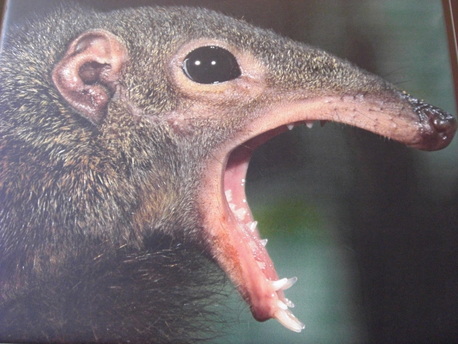n
“The human nose can detect one trillion different odors, far more than we previously thought, say US scientists.”
Back story: for the better part of the last 15 or more years, the Deductive Tasting PPT segment in the MS Introductory class stated that while people can only taste five things (sweet, sour, bitter, salty and umami), they are capable of smelling over 10,000 things. That number was updated to 100,000 things at some point around the year 2002 and then 114,000 a few years later. While you may be tempted to think human evolution has skyrocketed in the last few years, what with the advent of social media and all, it’s probably more like the equipment used to measure pertinent data is capable of more accurate and/or complex calibration. On another note, we need to add kokumi and fat to the five tastes above with the latter explaining our fixation with bacon.
New estimates published in Science magazine earlier this year suggest that the human nose far outdoes the eyes and ears in terms of how many different stimuli it can distinguish. Scientists at Rockefeller University used 128 different olfactory molecules ranging from fruits to herbs and beyond for the experiment. The molecules were randomly blended into “cocktails” of 10-30 aromatics to come up with new olfactory combinations. From there, the study participants were asked to identify a specific aromatic from three samples of which only two contained the aromatic. Using the results, the scientists extrapolated that the average person can smell at least one trillion different odors. By the way, my definition for the term extrapolation is using multiplication to make ordinary thing as incomprehensible as possible.
Study co-author, Dr Leslie Vosshall, wrote that animals remain two or three times better than humans at smelling as more of their brain is devoted to olfactory. Vosshall was quoted saying, “You can push the sense of smell to work harder – you can get bigger and crazier, more intense perfumes.” She further added, “We are using a tiny part of our olfactory powers.”
I would slightly disagree in that I think it’s not just physically smelling involved, but our thinking as well. We need to push our brains/memories harder. In regards to tasting, that doesn’t necessary involve actually tasting with wine in hand.
Charles Spence, a professor of experimental biology at Oxford, was quoted on the study as saying: “I guess no matter how many smells we can discriminate, the evidence still shows that even the best experts cannot really pull much more than three odourants out of a mixture, contrary to what all those wordy wine writers might have us believe.”
Ahem. Aside from what is otherwise a snarky remark, I would like to remind the good Professor Spence that anyone who uses the M.S. deductive tasting grid with any sense of proficiency has to pull more than three things out of a glass—as in a lot more than three things. Context, as always, is the last word.
While the subject of olfactory deservedly attracts top scientists and studies in every effort to quantify and make it objective, at the end of the day the results of any study are based on the ability of participants to recognize aromas which in turn is based personal memory and interpretation of those memories over time–not exactly hard science.
What does the study mean to us wine professionals? Supposedly that the human being can potentially smell exponentially far more aromatics that will ever be present in a glass of wine.
And to always be careful when extrapolating.
Relevant? Perhaps, but probably with a Negroni in hand …
nn
